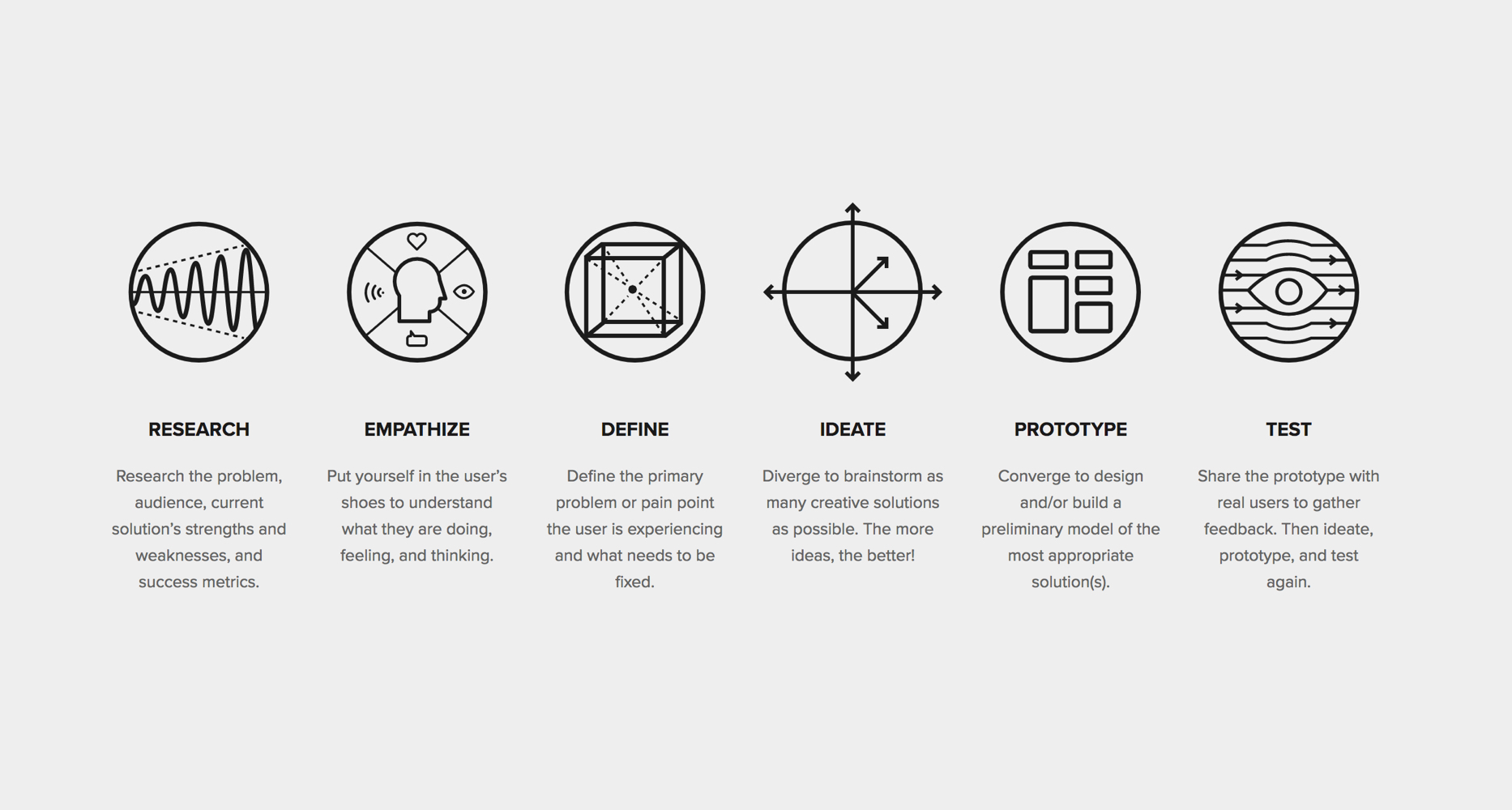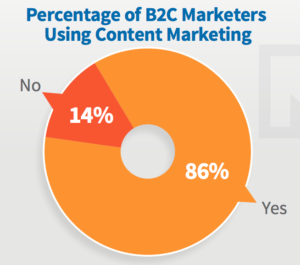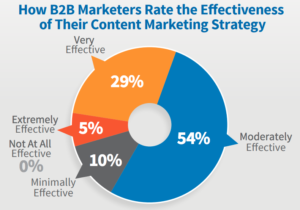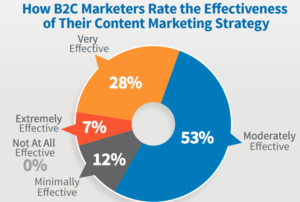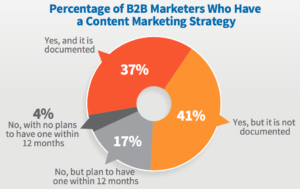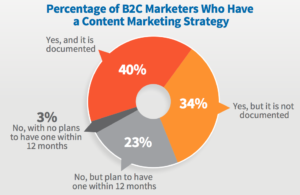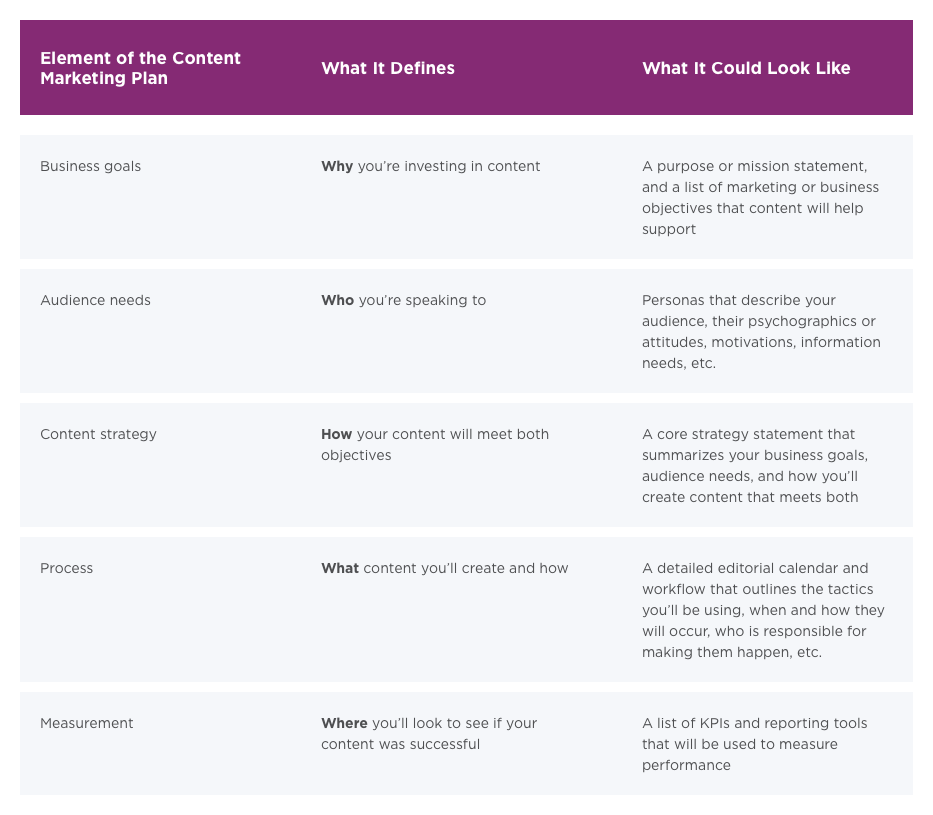Starting with Content Strategy: The Key to a Successful Content Marketing Plan

For decades, engineering and development drove the design process. Product designers and business owners would ask,“What features should this product have?” instead of “What do people need this product to do?” By the 1990s and 2000s, they started to see the flaws in this approach. It was creating a marketplace full of products that had lots of bells and whistles, yet weren’t actually usable or meaningful to real people.
That’s when human-centered design and user experience design began to take hold, . Since then, the biggest innovations have come from brands who use design thinking to create the next big thing. Rather than jumping straight into creation, they start with researching, empathizing with their users, and defining the problem that needs to be solved. Only then do they brainstorm, build, and test solutions.
Now, the same shift is happening in marketing. Before the Internet was around, a marketer’s job was much easier. They would come up with a catchy tagline for a new product, make a few attention-grabbing ads, and watch new customers come running. But then everything changed. Technology has taken over, creating more competition and an endless array of new advertising tactics, many of which are centered around content.
Fortunately, content strategy is having a similar effect on marketing that UX has had on the field of design: putting the emphasis back on the user. By focusing on user success, both designers and marketers are unlocking greater business success.
Here’s how you can improve your customer journey and achieve better results by incorporating content strategy into your UX design and content marketing practices.
Content strategy is having a similar effect on marketing that UX has had on the field of design: putting the emphasis back on the user.
Survey Says: More Does NOT Equal Better
According to two Content Marketing Institute studies of 2017 Benchmarks, Budgets, and Trends for B2B and B2C companies, almost 90% of businesses report that they use a content marketing plan, meaning they create and distribute relevant, valuable content as part of their marketing efforts.
Most are dedicating around 26-29% of their marketing budget (not including staff) to a number of tactics, including social media, blogs, email newsletters, in-person events, ebooks/whitepapers, video, infographics, webinars, and more.
It seems like everyone is capitalizing on content, so it must lead to amazing results…right?
Not quite.
In fact, less than 40% of businesses surveyed say their content efforts are “very” or “extremely” effective. Yet the vast majority (over 80%) plan to keep their content marketing budget the same or increase it in the next 12 months.
What a second: Doesn’t that seem like a waste? Why would you continue to invest in tactics that are somewhat or completely ineffective? Wouldn’t it make sense to figure out better ways to actually achieve the results you’re looking for?
The answer to both questions is “yes.” And it all starts with strategy.
Less than 40% of businesses surveyed say their content efforts are “very” or “extremely” effective. Wouldn’t it make sense to figure out better ways to actually achieve the results you’re looking for?
What is Content Strategy vs. Content Marketing?
“We must work to define not only which content will be published, but WHY we’re publishing it in the first place. Otherwise, content strategy isn’t strategy at all. It’s just a glorified production line for content nobody really needs or wants.” – Kristina Halvorson
Content strategists guide planning for the creation, delivery, and governance of content. They often have a number of responsibilities which (no coincidence) overlap with UX design:
- Collaborating with internal stakeholders and users to identify the real problem and create useful, usable, engaging content that achieves business goals and user needs
- Conducting audience research and/or leveraging existing research to understand the user’s journey, tasks, wants, and needs
- Identifying and implementing the appropriate research tools (e.g., surveys, interviews, empathy mapping, content audits, user intent analysis, SEO audits, etc.) to understand user needs, analyze existing content, and plan and create new content
- Documenting the overall content strategy and associated tactics (e.g., brand foundation, audience personas, voice and tone, brand story, messaging architecture, editorial plan, etc.)
- Championing the value of quality content internally and externally
- Collaborating with other team members and stakeholders to deliver the right content, in the right place, at the right time, in the right way
On the other hand, content marketers create and distribute relevant, valuable content that is used as a “soft sell” to build interest in a brand without directly selling the product or service. They often take the lead on:
- Creating and managing an editorial calendar or content marketing plan that meets business goals and customer needs
- Publishing and distributing content to drive awareness, traffic, engagement, leads, and other key metrics
- Collaborating across departments to gather information from subject matter experts; ensure the content is designed, developed, and implemented as intended; and integrate content marketing with other marketing initiatives
- Overseeing governance to ensure existing content is relevant and up-to-date
- Measuring progress and optimizing for improvement
The Best Results Come From a Blend of Both
“More is not better. We need to create the minimum amount of content for the maximum amount of impact.” – Joe Pulizzi
Using content strategy OR content marketing can help support your brand’s sales goals and produce decent ROI. But the key to success isn’t doing more content marketing or shifting all resources to content strategy. It’s blending both to ensure you’re delivering the right content, to the right people, in the right way.
The key to success isn’t doing more content marketing or shifting all resources to content strategy. It’s blending both to ensure you’re delivering the right content, to the right people, in the right way.
The Content Marketing Institute studies show that only around 40% of B2B and B2C companies have a documented strategy. No wonder their results haven’t been stronger!
Anchoring your product design and content marketing plan in a solid strategy is the best way to achieve more substantial, sustainable results, including:
- Better outcomes and KPIs (conversions, sales/revenue, churn, satisfaction/NPS, loyalty, employee satisfaction, etc.)
- Higher ROI
- Less rework
These improvements won’t happen overnight, but by starting with strategy, implementing and testing tactics, and optimizing along the way, you’ll begin to see the impressive results everyone will be buzzing about.
The Elements of a Content Marketing Plan
Content strategy serves as the foundation for designing and marketing meaningful products. After collaborating with UX designers, developers, and other stakeholders to build a product, content strategists often work with Marketing to create content that will help attract and retain users.
Like traditional designers who packed their products with ton of features that users didn’t actually want or need, many traditional marketers have been doing the same with their content. Their content marketing plans focus on what content will be created. But in order to be effective, they need to address the why, who, where, how, and when too.
Effective content marketing plans focus not only on what content will be created, but also why, who, where, how, and when it will be created.
InVision: A Content Success Story
InVision, one of the leading design prototyping tools on the market, has attracted over 3 million customers, hundreds of thousands of followers, over $132 million in funding in just a few years – thanks, in large part, to content.
InVision bakes content strategy into both Product and Marketing. Their content specialists work with Product Managers and Product Designers to help optimize existing products and design new ones, while driving the company’s wildly successful marketing engine. With their help, InVision has expanded from one basic prototyping tool (which was a game changer for designers) to a robust product with tons of features, each addressing a key user need.
Creating the product was one thing, but InVision knew they couldn’t just have an “If we build it, they will come” mentality. That’s why they’ve gone all-in on content marketing as a way to drive growth.
InVision grounds their content marketing plan in a solid strategy that aligns with their business objectives, mission, core values, and audience. To achieve their goals while meeting their audience’s needs, they decided to take a unique approach: having their readers write the content.
In an interview with NewsCred, former Head of Marketing Clair Byrd said:
“InVision’s strategy on the blog has never been to be about InVision, but instead, to represent an accurate cross-section of what the design community cares about at any given point in time. We double-down on this concept by not actually ‘authoring’ our own content. 95% of InVision content is contributed. We want to give designers a platform for their thoughts and their processes as it relates to design skills, methodology, and leadership.”
“InVision’s strategy on the blog has never been to be about InVision, but instead, to represent an accurate cross-section of what the design community cares about at any given point in time.”
InVision’s marketing team didn’t just put all their eggs in the blog basket, though. Designers crave a hub they can count on for industry insights, and InVision saw the possibilities for delivering those insights in many ways, from more traditional tactics like in-person events and webinars, to innovative ideas like the DesignBetter online library of resources and the Design Disruptors documentary.
Design Disruptors was a content marketing masterpiece. The film featured some of the design industry’s brightest minds talking about the evolution of design. It wasn’t about InVision and barely even mentioned the product, but there’s no doubt the documentary had business benefits.
Byrd was responsible for not only helping create Design Disruptors, but also distributing it. “The distribution strategy was driven by the question, ‘How can we get this film into the hands of the most relevant people?’” Byrd explained. “The foundation of this was data (who we approached, when, why, and how) and communication design (what we communicated, in what cadence, in what form, and at what critical moments).”
Based on this strategy, Byrd and her team worked with InVision’s designers and engineers to develop an array of digital content and features, including micro-video, disruptor profiles, competitions for pre-access, allowing people to organize community screenings, and built-in sharing functionality. They also partnered with companies in the community to host in-person events and screenings.
And wow, did that strategy pay off. In an Ask Me Anything (AMA) session on Growth Hackers, Byrd reported some impressive results, including:
- 200+ community events with over 18,000 attendees
- Over 75,000 email signups
- Over 1,000 inbound requests to host screenings
Design Disruptors was just one example of InVision’s content success. During Byrd’s three-year tenure with the company, she and the Marketing Team generated staggering growth:
- Captured nearly 100,000 leads
- Increased traffic to InVision-owned web properties by over 800%
- Boosted revenue by over 130%
- Became one of the industry leaders in content marketing, including being named No. 1 on Hubspot’s 2015 list for “Exceptional B2B Content Marketing,” No. 1 on Forbes list of “25 Digital Design Blogs to Follow,” and No. 1 on The Next Web’s list of “Promising Digital Design Blogs to Follow”
By starting with strategy and producing relevant, valuable content that consistently strikes the sweet spot between business goals and audience needs, InVision has become a role model within the content community and a leader in the entire design industry.
By starting with strategy and producing relevant, valuable content that consistently strikes the sweet spot between business goals and audience needs, InVision has become a role model within the content community and a leader in the entire design industry.
It’s All Part of the Customer Journey
Whether you’re a content strategist, content marketer, or designer, your work plays a key role in optimizing the entire customer journey. Content and design are often considered separate disciplines, but the leading companies know you can’t have one without the other. By investing in both UX and content (and ensuring there’s collaboration between the two), your brand can create effective, meaningful customer experiences that drive success for your business and users.
Curious how you could take a more strategic approach to content and improve your marketing results? Our team at Drawbackwards has been helping companies tell their story through UX design and content for over a decade, and we’d love to share some of the things we’ve learned with you. Get in touch to tell us more about your content challenges and learn how we could help you solve them.
